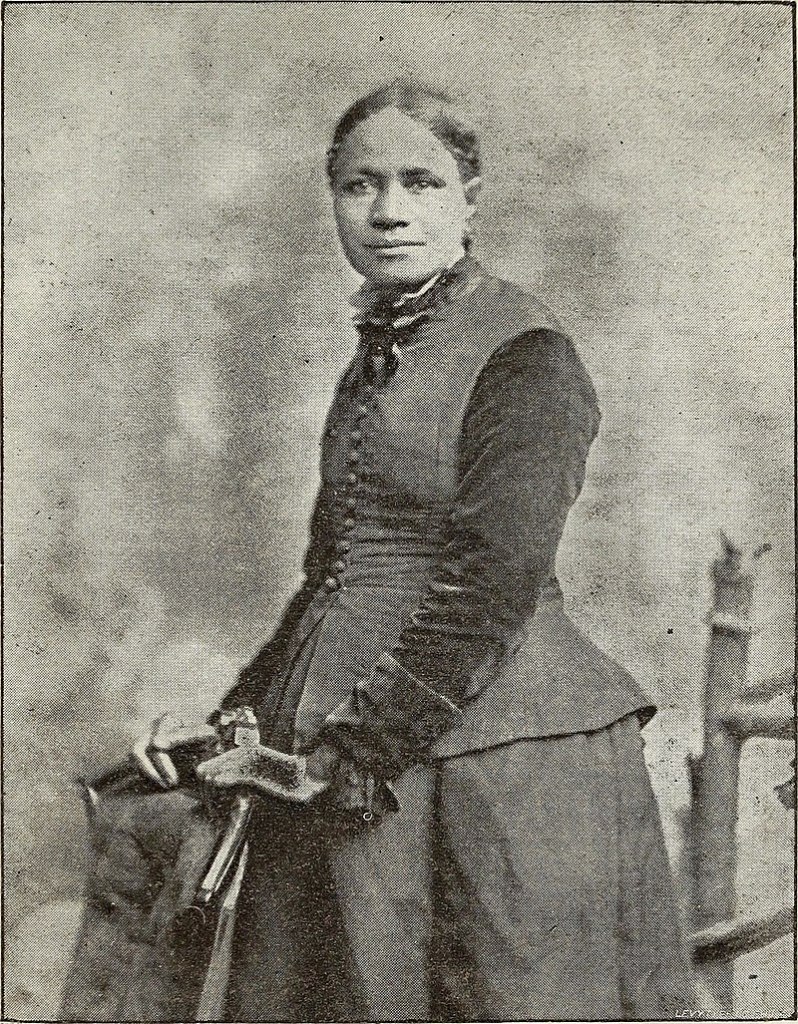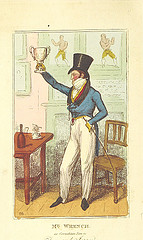All during Black History Month, the library will be highlighting influential Black authors throughout history. You can see more authors, and check out books by and about them, at the display in the front of the library.
Frances Ellen Watkins Harper (September 24, 1825 – February 22, 1911) was an American abolitionist, suffragist, poet, teacher, public speaker, and writer. She was the first African American woman to publish a short story in the United States.
Harper was born in Baltimore, Maryland, the only child of free parents. Both of her parents died in 1828, making her an orphan at the age of three. She was raised by her aunt and uncle, Henrietta and Rev. William J. Watkins, Sr. Harper was educated at the Watkins Academy for Negro Youth, established by her uncle in 1820. She attended the academy until the age of thirteen, when children were expected to join the workforce. She worked as a nursemaid and seamstress for a white family who owned a bookshop, where her love of books grew. Her first volume of poetry, Forest Leaves, was published when she was twenty-one years old.
At the age of twenty-six, Harper moved to teach domestic science at Union Seminary, an AME-affiliated school for Black students near Columbus, Ohio. She was the school’s first female teacher. She later took a position at a school in Pennsylvania. Shortly after the move, Maryland passed a law stating that free African Americans living in the North were no longer allowed to enter the state of Maryland. If found they would be imprisoned and sold into slavery, leaving Harper unable to return to her home state. She devoted her efforts to the antislavery cause and began writing poetry for antislavery newspapers. By the time Harper left Philadelphia in 1854, she had compiled her second small volume of poetry called Poems on Miscellaneous Subjects.
Harper spent the next eight years traveling across the United States and Canada as a lecturer. After her first speech “The Elevation and Education of our People,” she was hired as a traveling lecturer for various organizations dedicated to the antislavery cause. In addition to her antislavery lectures, Harper was committed to the suffrage and temperance movements. She included her observations from her travels in her writings and began to publish novels, short stories, and poetry focused on issues of racism, feminism and classism. In 1859, Harper published a short story in the Anglo-African Magazine called “The Two Offers.” This short story about women’s education became the first short story published by an African American woman.
She was married to Fenton Harper in November of 1860, and the couple had a daughter named Mary. When Fenton died four years after their marriage, Frances Harper began touring again and formed alliances with prominent women’s rights activists. In 1866, Harper spoke at the National Woman’s Rights Convention in New York. Her famous speech “We Are All Bound Up Together” urged fellow attendees to include Black women in their fight for suffrage.
Harper spent the rest of her career working for equal rights, job opportunities, and education for Black women. She was a co-founder and vice president of the National Association of Colored Women’s Clubs, and the director of the American Association of Colored Youth. Harper died on February 22, 1911, at the age of 85.
If you would like to read some of Frances E. W. Harper’s work, we have some on the display by the bulletin board in the front of the library.













